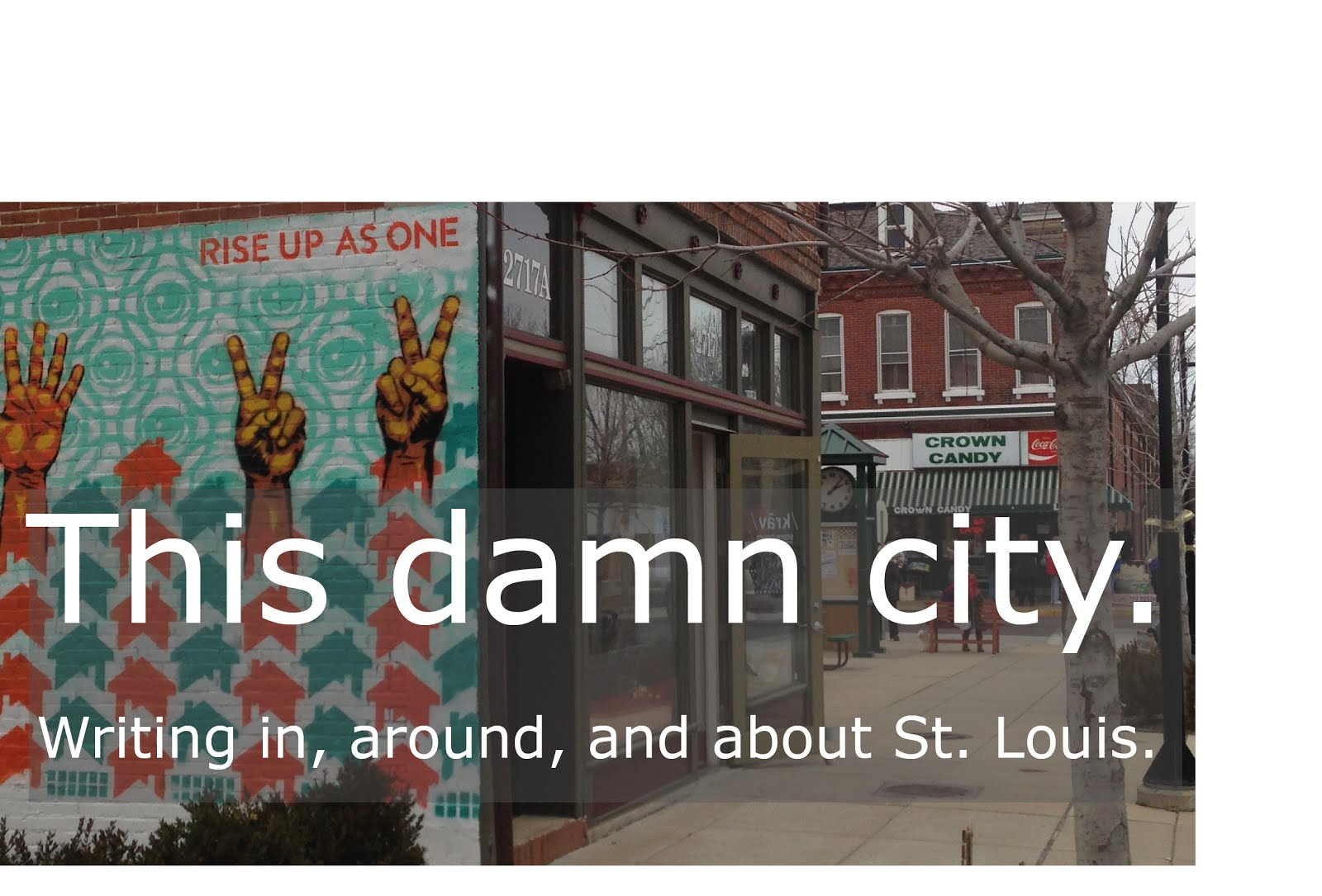Willis Avenue,
Looking South at the Railroad Tracks. Source: Google Maps Streetview
For the past two years, I led a split life, geographically
speaking—driving up to Champaign to attend graduate school during the week, and
back to St. Louis to be with my wife on the weekends. This meant putting about
500 miles per week on my 2000 Toyota Corolla. Needless to say, I became close
friends with auto mechanics in both cities.
I would ride my bike to pick up my car from the mechanic in
Champaign. I took back roads for this.The route, which mainly used Willis
Avenue, was split almost perfectly in half by a railroad track. I never
actually saw a train using this track, a spur of the Norfolk Southern. Nevertheless,
it formed a formidable physical barrier. Not only did the road stop abruptly,
there was no pedestrian path to the other side. Crossing required getting off
my bike and walking it over the tracks. This was a minor inconvenience for me,
but it had a remarkable effect on the neighborhood.
Railroad Tracks Form
a Barrier on Willis Ave
Source: Google Maps
North of the railroad tracks, the neighborhood shifts notably.
Some homes are less well-maintained. The cars parked in front are generally
lower value. This is, apparently, “the wrong side of the tracks.” The data back
this up. Conveniently (for the purpose of this blog post, at least) the
railroad tracks also divide two census tracts. Here are 2014 median home values
in these adjacent tracts:
- Tract 10 (South of the tracks): $131,700
- Tract 9.01 (North of the tracks): $84,200
Home values in the southern tract are over 50% higher than
those to the north. It is no secret that neighborhoods change, and home values
fluctuate between areas. In fact, median home values continue to rise as you
move in a straight line south of this point. What is notable here is the scale
of the change—comparing adjacent tracts for the next three tracts to the South
shows an average of only a 15% increase in median home value—and how quickly it occurs.
Looking more closely at the area surrounding the tracks indicates that the tracks themselves play a role. I pulled assessed value data for the 10
homes I estimated to be closest to the Willis Ave tracks barrier, for both the
north and south sides of the tracks. This is an admittedly unscientific
approach. Despite is flaws, offers a picture of how quickly property values
change. The 10 homes north of the tracks had an average assessed value of
$18,533. The 10 homes south of the tracks assessed for $28,899, on average.[1]
Homes just south of the tracts assessed for about 56% higher
than homes north of the tracts. This is the same percentage difference that
existed between census tracts. The differences in home value between the two
tracts may be less of a gradual progression, and more of an abrupt jump at this
physical barrier.
What does this mean, and why does it matter? To some, this
may just be a function of how the world works. Given a choice between sides of
the tracks, people will pay a premium to live on the “right” side. I would
argue that its implications are actually much more troubling. The very fact
that there is a right side of the tracks means we have created a built
environment that works against social mobility and reinforces inequality.
Social barriers tend to coalesce around physical barriers. These
simple railroad tracks can become the dividing line between different
neighborhood associations, youth sports teams, and elementary schools. The sum
total of all these divisions means that people living on opposite sides of the
tracks are far less likely to intermingle and form social bonds. Children
growing up on the wrong side of the tracks miss out on a million little
opportunities, like seeing the different professions of their friends’ parents
and becoming inspired to pursue a career path. Poorer households north of the
tracks have less political capital and ability to resist unwanted or noxious development,
like liquor stores. Over time, disparities reinforce and calcify.
This is not to say that the purpose of these railroad tracks
is to divide, or that they were built with malicious intent.[2]
However, we must acknowledge that they have a very real effect. Physical barriers
beget social barriers. This doesn’t just apply to railroad tracks, either.
Highways, blocked streets, and inhospitable intersections are just a few
examples of the physical barriers we erect that harden social barriers. If we
believe social mobility and integration are good things, then we have to
reflect on our built environment and its role in either supporting or hindering
them. If we want to prevent stark disparities between places, then we must make
our built environment as permeable and connected as possible. We must work
toward cities where no child has to grow up on the wrong side of the tracks.


